A Pineapple By Any Other Means Is Not As Sweet
Neil Melancon
Louisiana Farm Bureau
Class XVII mounted up on a tractor tour of Organic Paradise's pineapple farm in Sarapiqui, Costa Rica. Their operation spans 300 acres, which translates to about 6.6 million pineapples per year!
All apologies to The Bard for that paraphrased headline, but I am on a sugar rush from the pineapple I just had.
Here at the Organic Paradise pineapple farm in Sarapiqui, we just completed one of the most educational experiences of the trip for me, knowing nothing about its production. They took us from planting to exporting during this tour and by the end we knew not only how they’re produced, but the best way to pick a pineapple. More on that later.
Brazil is the number one producer of pineapples in the world, but not the top exporter, as they consume them domestically. Those tourists love their piña coladas! Costa Rica is the top exporter in the world, shipping more than two billion metric tons each year.
Organic Paradise ships a lot of those pineapples. It’s a cooperative effort, run by the SOGO Foundation, composed of the Soto and Gonzales families. They have about 150 hectares of pineapples, which is roughly 300 acres. Each acre can hold 22,000 pineapples! Quick math should tell you that’s 6.6 million pineapples, but they don’t get to sell that many.
The pineapple sits atop its plant stalk. The organic material here is recycled into the soil for the next generation, although cover crops are also used to fix nitrogen in the soil.
As the name suggests, the operation is organic, certified by both the USDA and the Costa Rican government. As such, they contend with a number of problems, including insect pressure, which can damage the pineapples. Bruising and other maladies can also cause them to be rejected, which means they either get sold domestically, or used in other products such as jams and jellies, or dried fruit and juice. Those products earn significantly less than each organic pineapple, which OP sells about four million of each year.
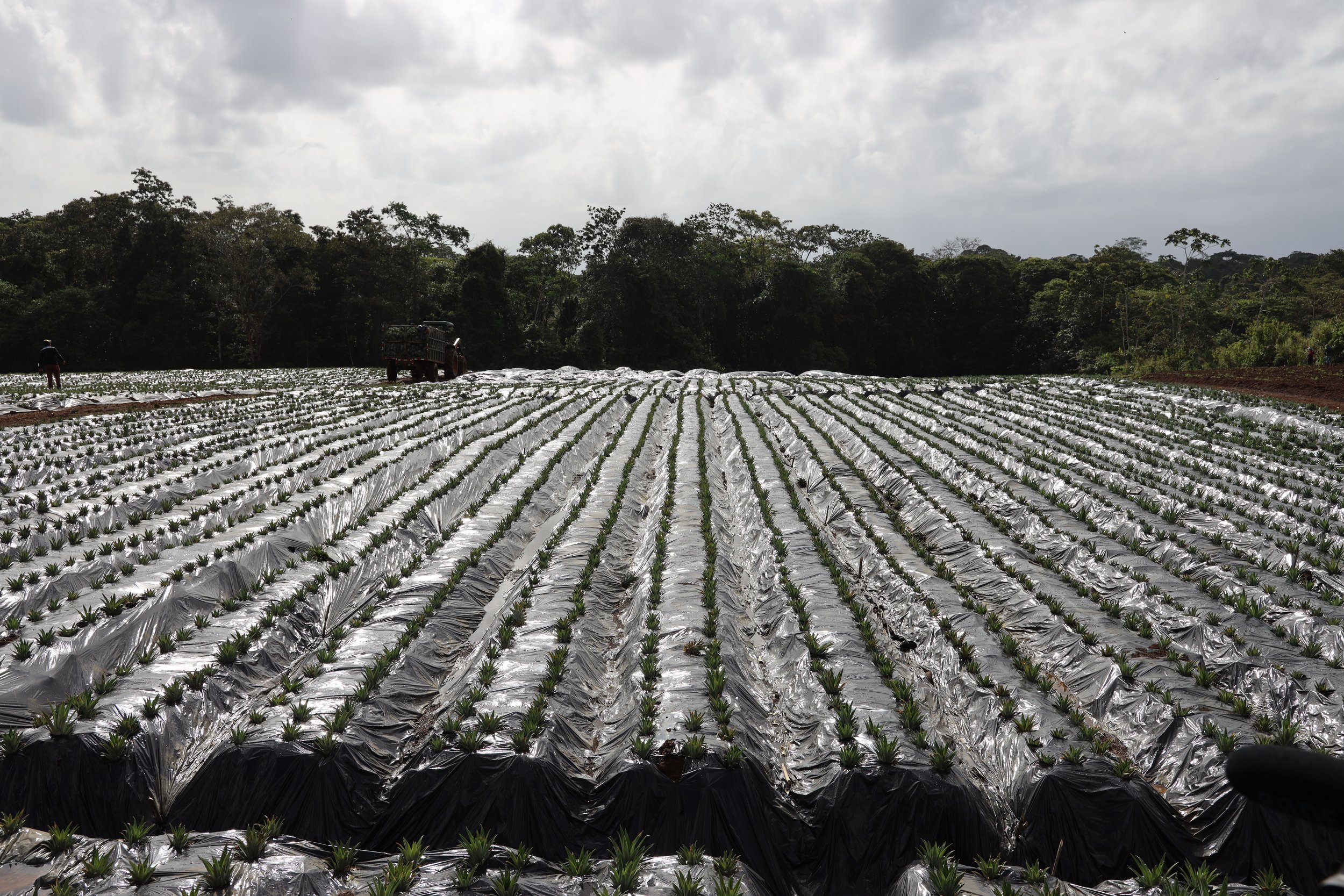
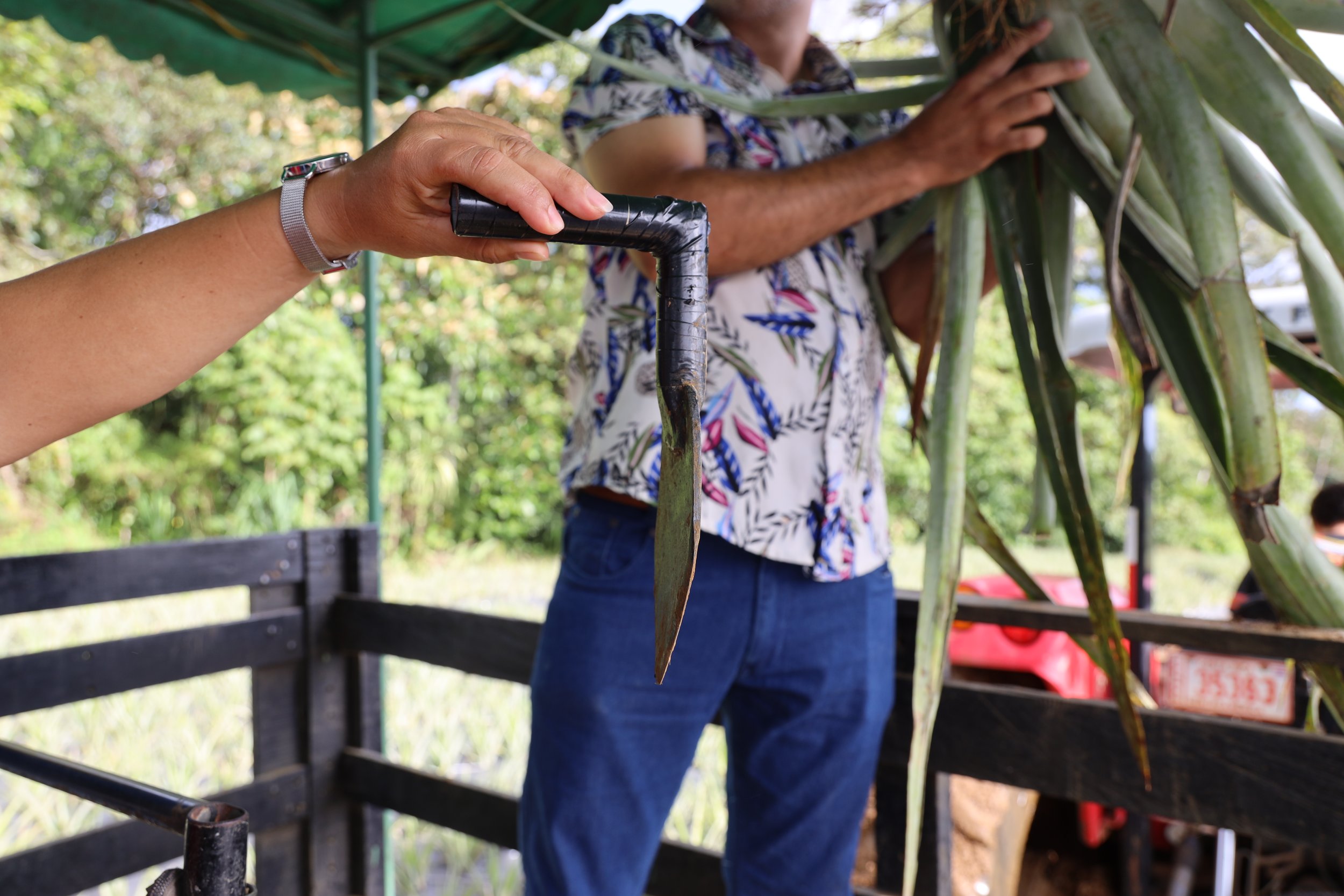
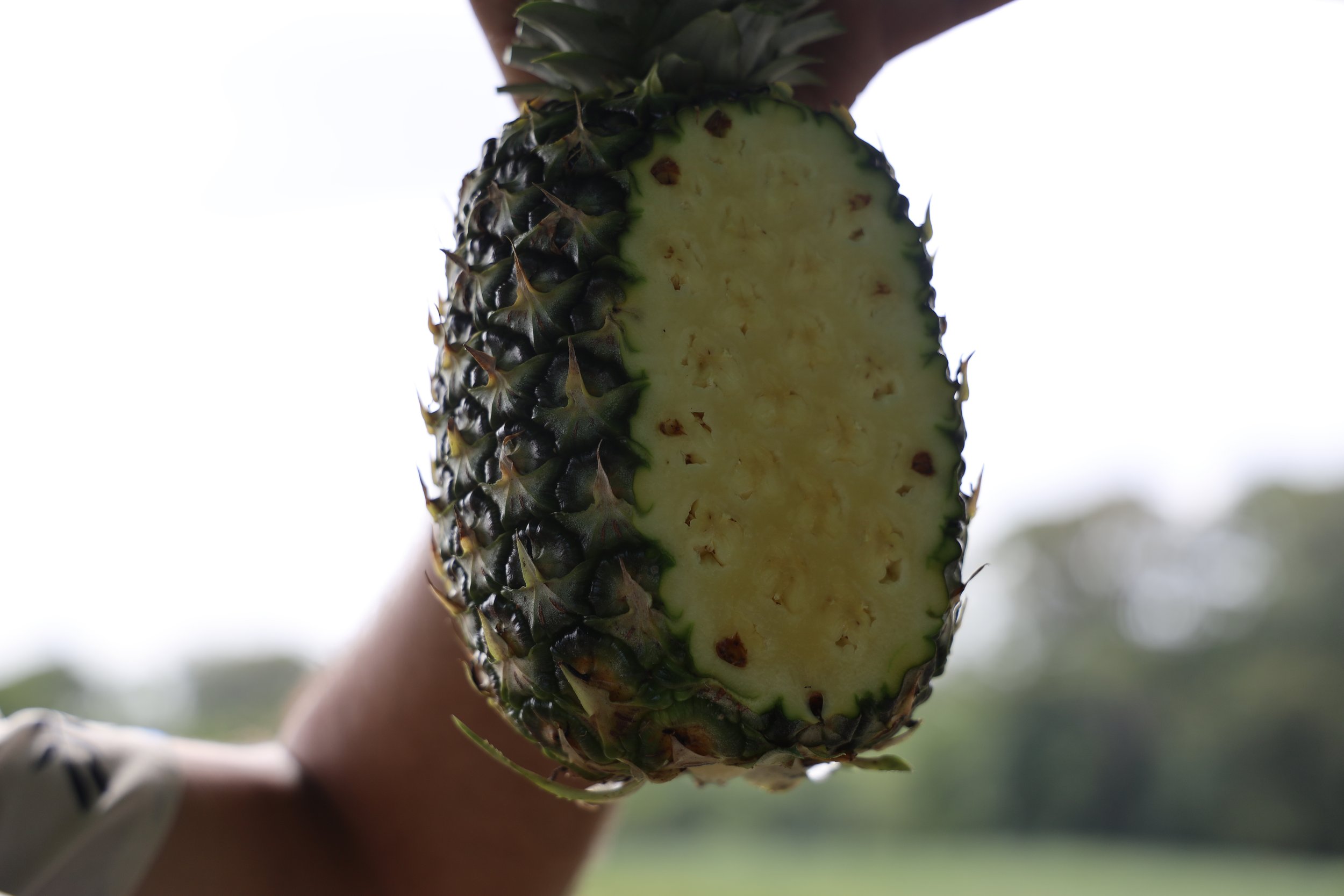
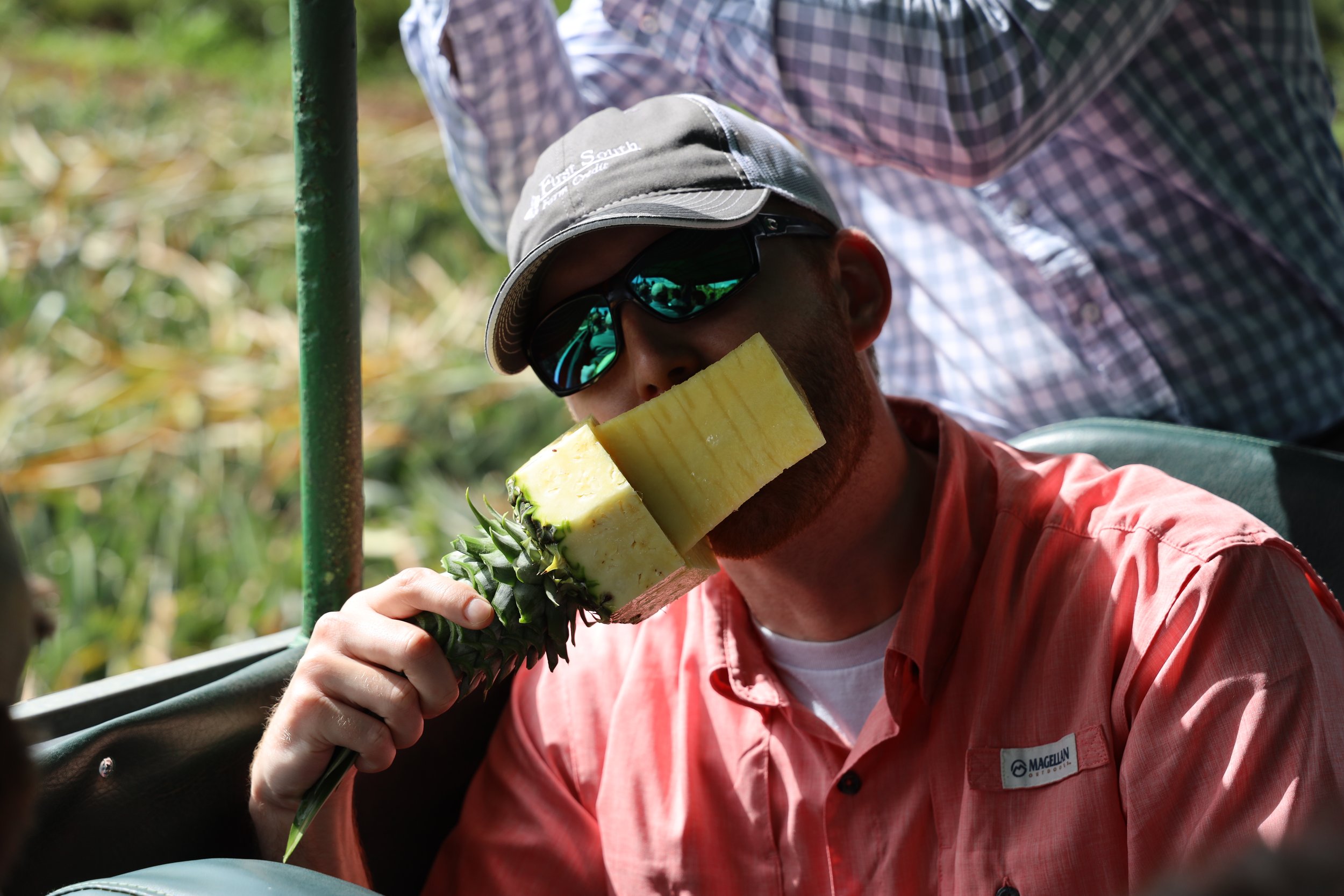
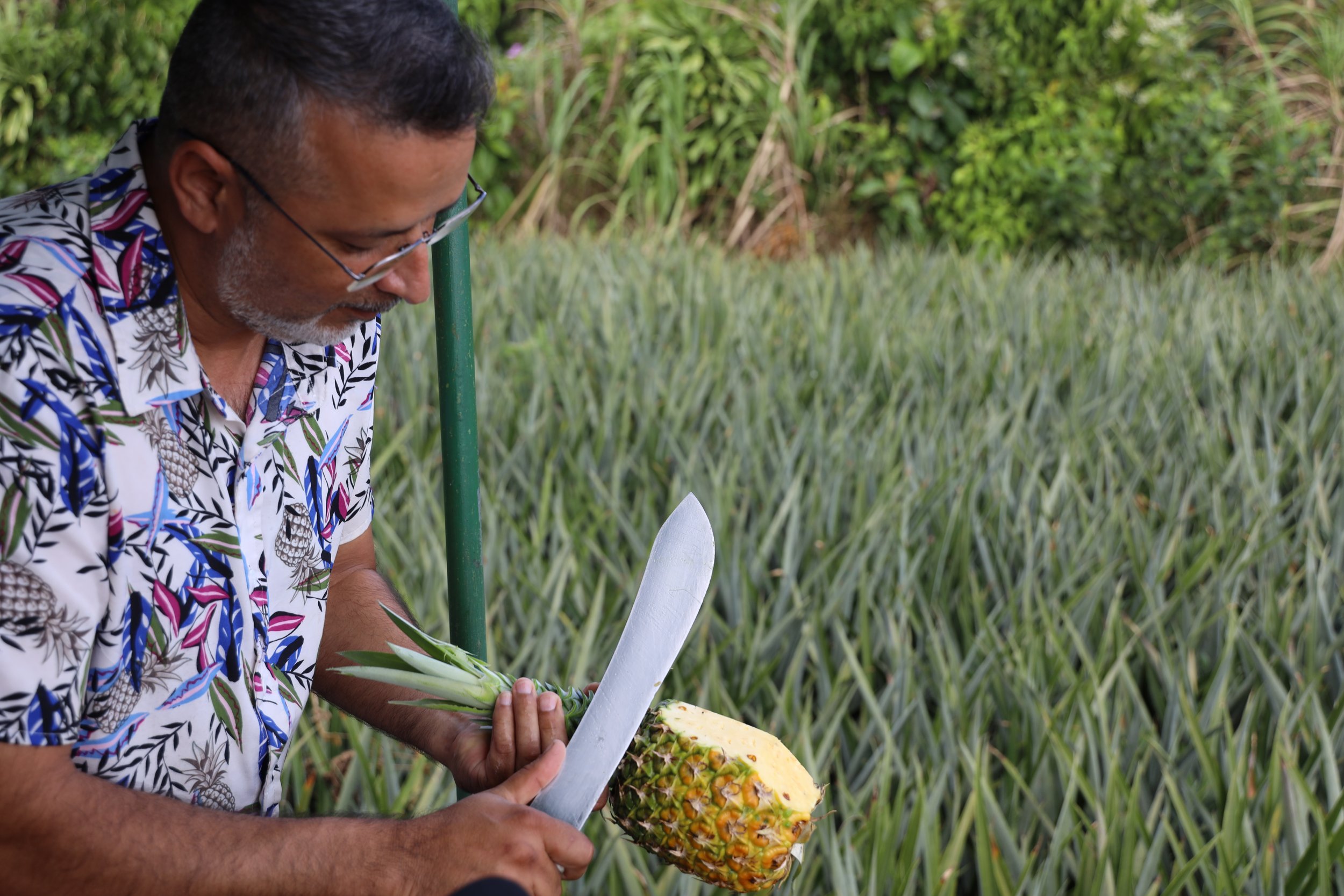
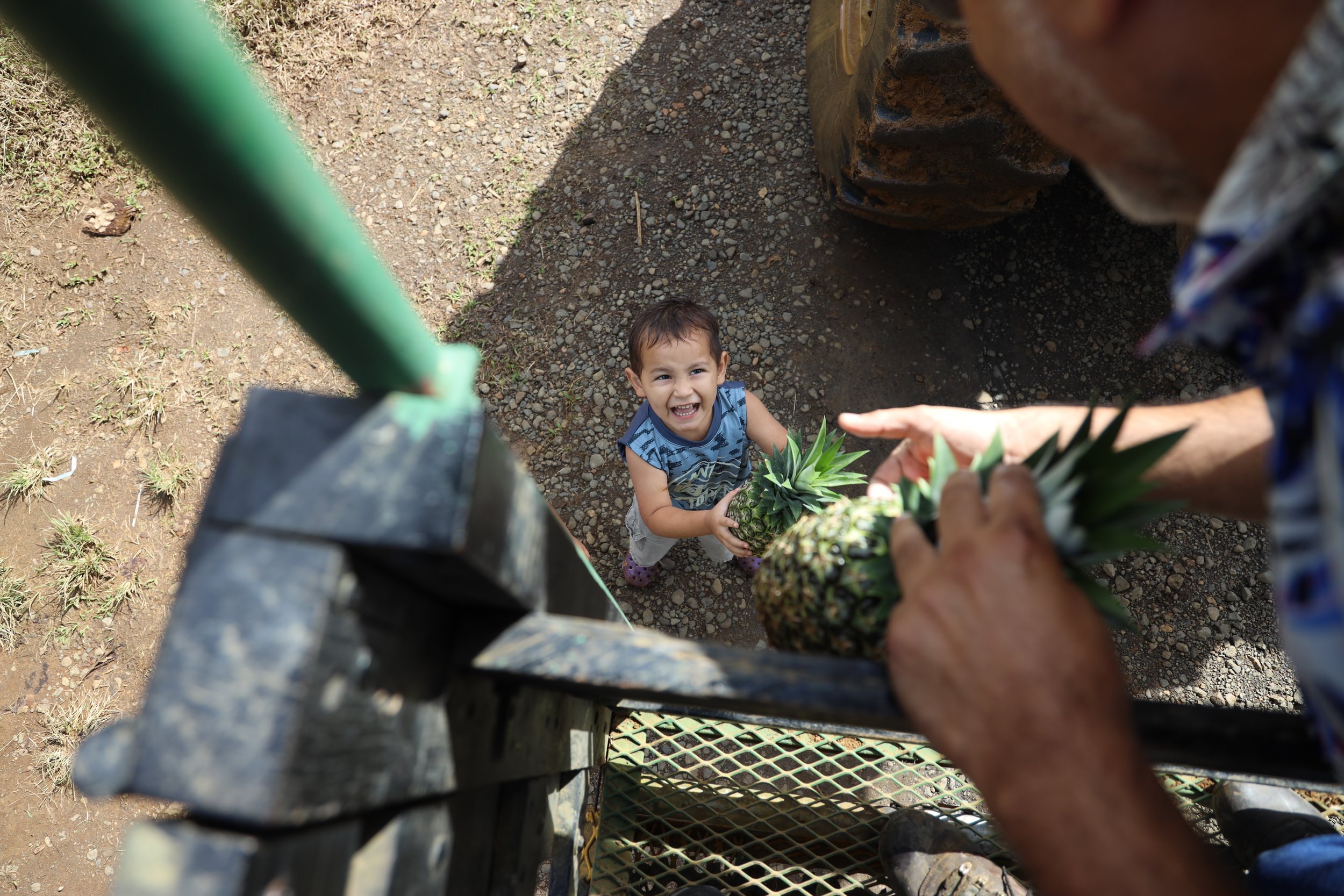
A lot of work and care goes into that production. Plastic is put down over much of that acreage and has to be replaced every three years. Teams of 12 laborers, mostly from Nicaragua, can plant about two acres a day. With the weather in Costa Rica, planting and harvesting goes on year round.
In addition to the labor, certification, inspection and insect pressure, sometimes pineapples are just stressed out, or rather, not stressed enough. You read that right, each of them has a mood and it’s only when stressed from lack of nutrients, too much water, insects or other maladies that the plant produces a hormone, ethylene, and begins to fruit. No farmer has any idea when that might be naturally, and plants can vary from individual to individual. Our guide said that if anyone figures out how that cycle works, the next variety will be named after them.
OP has a solution though. Four months after planting, they inject liquified ethylene into the soil at night, which triggers fruit production. Another four months later, the pineapples are ready to harvest. One of the key aspects of harvest is not damaging the fruit, which is why you see the tops of them still intact. They’re turned upside down for transport so the crown can kind of act like a cushion for the fruit, and they’re floated in water prior to export so they’re not damaged.
The SOGO Foundation, which runs Organic Paradise, believes in community support beyond its products. Here, the guide gave free pineapples to needy families along the route.
Ok, you’ve read this far—so what’s the secret to picking the best pineapple? Well, I’m not going to tell you fully. You’ll have to wait for the TWILA episode where I’ll show this process in detail. What I can tell you is that one of the big differences between organic and conventionally grown pineapples is that conventionally grown are hormonally-treated to produce the yellow color. That color has zero to do with the taste.
We all got to try them and when I say you haven’t had a pineapple until you’ve had one fresh from the field, I mean it. If a store-bought one is like a violin, the field ones are like a symphony. Everyone in the class got to try it and a few got to indulge in eating the remainder straight from the fruit. No one passed on the opportunity.
Before wrapping from this pineapple paradise, a couple of quick notes. Our tour guide was extremely generous and had fresh piña coladas (rum optional) waiting for our group once the tour concluded, as well as dried pineapple and a spread for Ritz crackers, which was amazing. On the way there, they donated two pineapples to a nearby needy family. SOGO is committed to not only exporting pineapples, but being an asset to their community and it shows.
This will be my last blog from this trip to Panama and Costa Rica. It’s my fourth overseas tour with Ag Leadership (fifth, if you count Cuba through the Alumni group). While it may seem like all fun and games, it is also a lot of work for us editing blogs, shooting photos and videos. Once we get back, we’ll have at least three solid days of editing the show we’ve put together, plus we’ll have left overs (including this pineapple story) to edit in the coming weeks. Still, I wouldn’t trade this job for the world, especially as I’ve gotten to see so much of it. I’d like to thank the members of Class XVII, Bobby Soileau, the Ag Leadership Alumni and especially Farm Bureau for giving me such an amazing career and opportunity.
As they say in Costa Rica, ¡Pura Vida!



